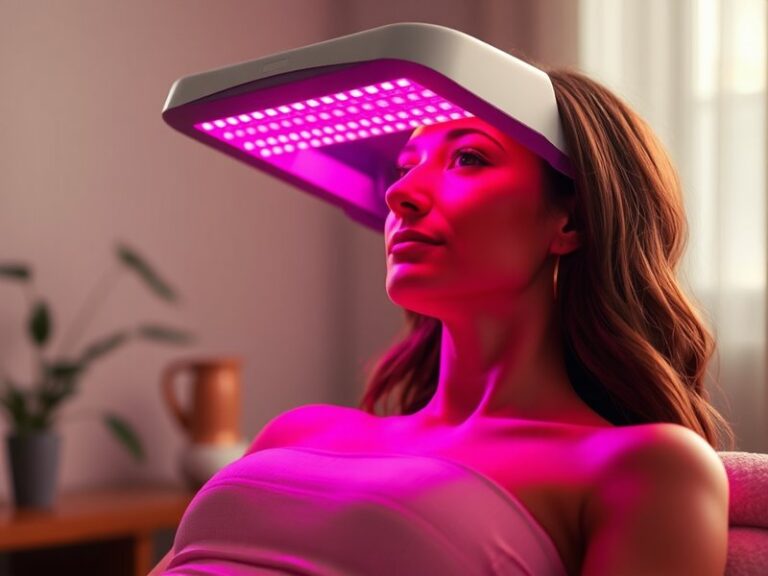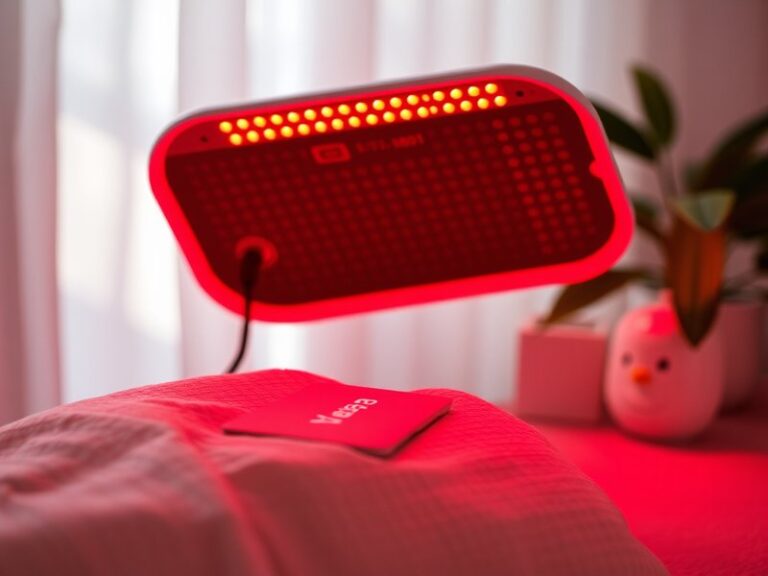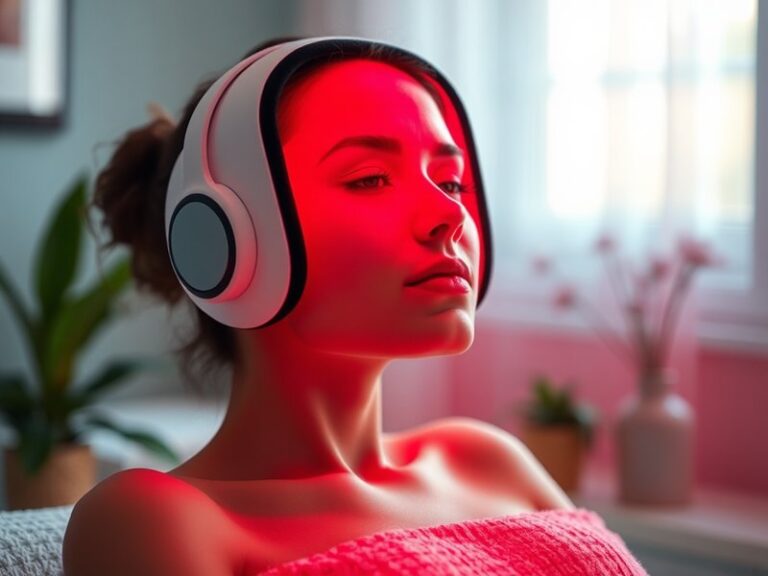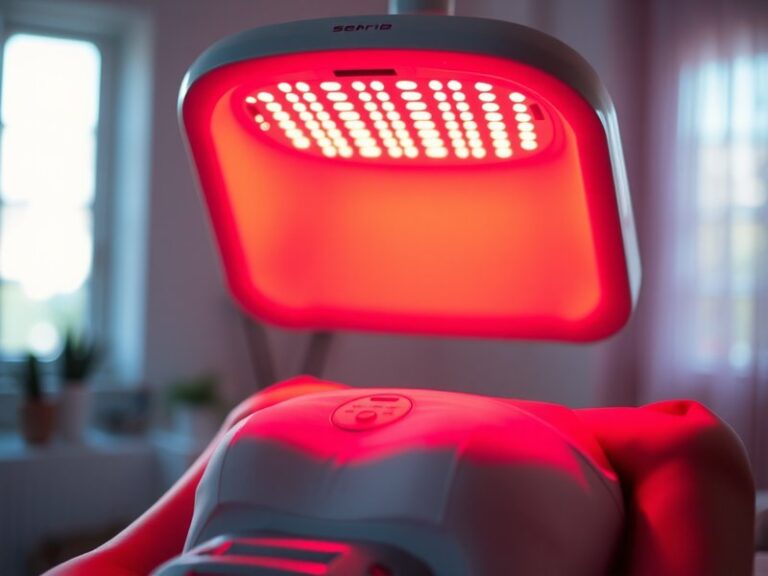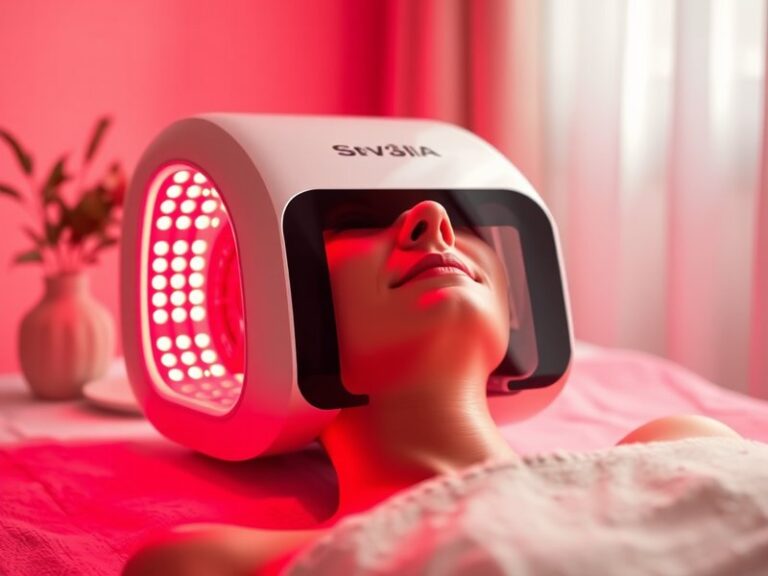What To Expect With Red Light Therapy?
What To Expect With Red Light Therapy?
Are you considering red light therapy and wondering what benefits it might bring to your health routine?
Discover the story in Can Babies Use Red Light?
This article will explore red light therapy, including its definition, benefits, considerations before starting, alternatives, and answers to frequently asked questions. By the end, you’ll have a comprehensive understanding of what to expect from this innovative treatment.
Key Takeaways
- Red light therapy harnesses the power of low-level wavelengths of light to promote healing and rejuvenation.
- Benefits include improved skin health, reduced inflammation, and enhanced muscle recovery.
- It is important to assess personal health conditions and consult with a healthcare provider before starting any new treatment.
What is Red Light Therapy?
Red light therapy (RLT) is a non-invasive treatment that uses low wavelengths of red light to stimulate various biological processes in the body. This form of therapy is also known as low-level laser therapy (LLLT) or photobiomodulation.
Originally developed for medical purposes, red light therapy has gained popularity for its applications in aesthetics and fitness. It works by penetrating the skin and increasing mitochondrial activity, which boosts energy production in cells, leading to healing and regeneration.
The therapy can be administered through various devices, including handheld units, panels, and large full-body devices, making it accessible for personal use or in clinical settings.
What are the Benefits of Red Light Therapy?
Red light therapy offers numerous benefits that can positively impact physical and skin health. Below, we explore some of the most notable advantages.
Improved Skin Health
Red light therapy is widely recognized for its ability to improve skin health. It can enhance collagen production, leading to firmer and more youthful-looking skin. Many users report reduced wrinkles, fine lines, and improved skin tone and texture.
Reduced Inflammation
Another significant benefit of red light therapy is its anti-inflammatory properties. Studies have shown that it can help reduce inflammation in conditions such as arthritis, leading to decreased pain and improved mobility.
Enhanced Muscle Recovery
Athletes and fitness enthusiasts often use red light therapy to speed up muscle recovery after workouts. By increasing blood flow and reducing soreness, this therapy helps improve performance and decrease downtime between workouts.
Pain Relief
Many users find that red light therapy can alleviate chronic pain conditions. It is thought to work by promoting blood circulation and reducing inflammation, making it appealing for conditions such as back pain, joint pain, and migraines.
Wound Healing
Red light therapy has been shown to accelerate the healing of wounds and injuries. This can be particularly beneficial following surgical procedures or for individuals with chronic wounds.
Is it Possible to Use Red Light Therapy at Home?
Yes, using red light therapy at home is possible, thanks to the availability of various devices designed for personal use. The market offers everything from handheld units to large panels that can treat both small areas or the entire body.
What are the Advantages of Home Use?
Convenience is a significant advantage of home use. Users can easily incorporate therapy into their daily routines without the need for in-office appointments, saving both time and money. Moreover, home devices can allow for more regular sessions, potentially amplifying results.
What are the Disadvantages of Home Use?
Despite the advantages, home devices may lack the power or effectiveness of professional-grade equipment used in clinics. Users must also ensure they follow the manufacturer’s guidelines for optimal results, which may require a certain level of knowledge about the technology.
What are the Things to Consider Before Using Red Light Therapy?
Prior to starting red light therapy, several factors should be taken into account to enhance safety and effectiveness.
Consulting a Healthcare Provider
It is crucial to consult with a healthcare provider, particularly if you have existing health conditions or are pregnant. They can provide tailored advice and ensure the therapy is appropriate for your specific situation.
Device Quality and Safety
Not all red light therapy devices are created equal. Researching the quality and safety of devices is essential. Look for FDA-cleared or CE-certified models to ensure proper emission standards.
Consistency and Duration of Treatment
Consistency is key to experiencing the benefits of red light therapy. Users should be prepared to commit to a regular schedule, as results may vary based on the frequency and duration of sessions.
What are the Alternatives to Red Light Therapy?
If red light therapy doesn’t seem like the right fit for you, several alternative treatments can improve health and wellness.
Microdermabrasion
Microdermabrasion is a skin treatment that involves exfoliating the top layer of skin to promote collagen production and reduce signs of aging. It offers a non-invasive way to enhance skin appearance, similar to some benefits of red light therapy.
Chemical Peels
Chemical peels involve applying a solution to the skin that causes it to exfoliate and eventually peel off, revealing a fresh layer. This treatment can help reduce fine lines, sun damage, and uneven pigmentation.
Cryotherapy
Cryotherapy uses extreme cold to treat various health and sports recovery issues. It can reduce inflammation and pain, making it a popular alternative for athletes seeking recovery benefits without light therapy.
Discover our thoughts on Does Red Light Therapy Tighten Jowls?
Conclusion: Is it Recommended to Try Red Light Therapy?
Red light therapy presents a range of impressive benefits from improved skin health to enhanced recovery times. While it is generally safe and effective for most people, it is essential to assess individual situations, especially in relation to existing health conditions. Consulting with a healthcare provider is a prudent step to ensure it aligns with your health goals.
Frequently Asked Questions
Is red light therapy safe?
Yes, red light therapy is considered safe for most individuals, with minimal side effects. It is non-invasive and does not produce heat or require downtime.
How long does a session typically last?
A typical red light therapy session can range from 10 to 30 minutes, depending on the device and the area being treated.
Can I use red light therapy for weight loss?
While some studies suggest that red light therapy may aid in fat reduction, it should be used in conjunction with a balanced diet and exercise for optimal results.
How often should I use red light therapy?
For best results, many practitioners recommend using red light therapy 3-5 times a week, but individual needs may vary based on specific conditions and goals.
Will I see results immediately?
Some people may notice improvements after a few sessions, while for others, it may take several weeks to see significant changes. Consistency is crucial for optimal outcomes.
By understanding what to expect with red light therapy, you can make informed decisions about incorporating this innovative treatment into your wellness routine.

